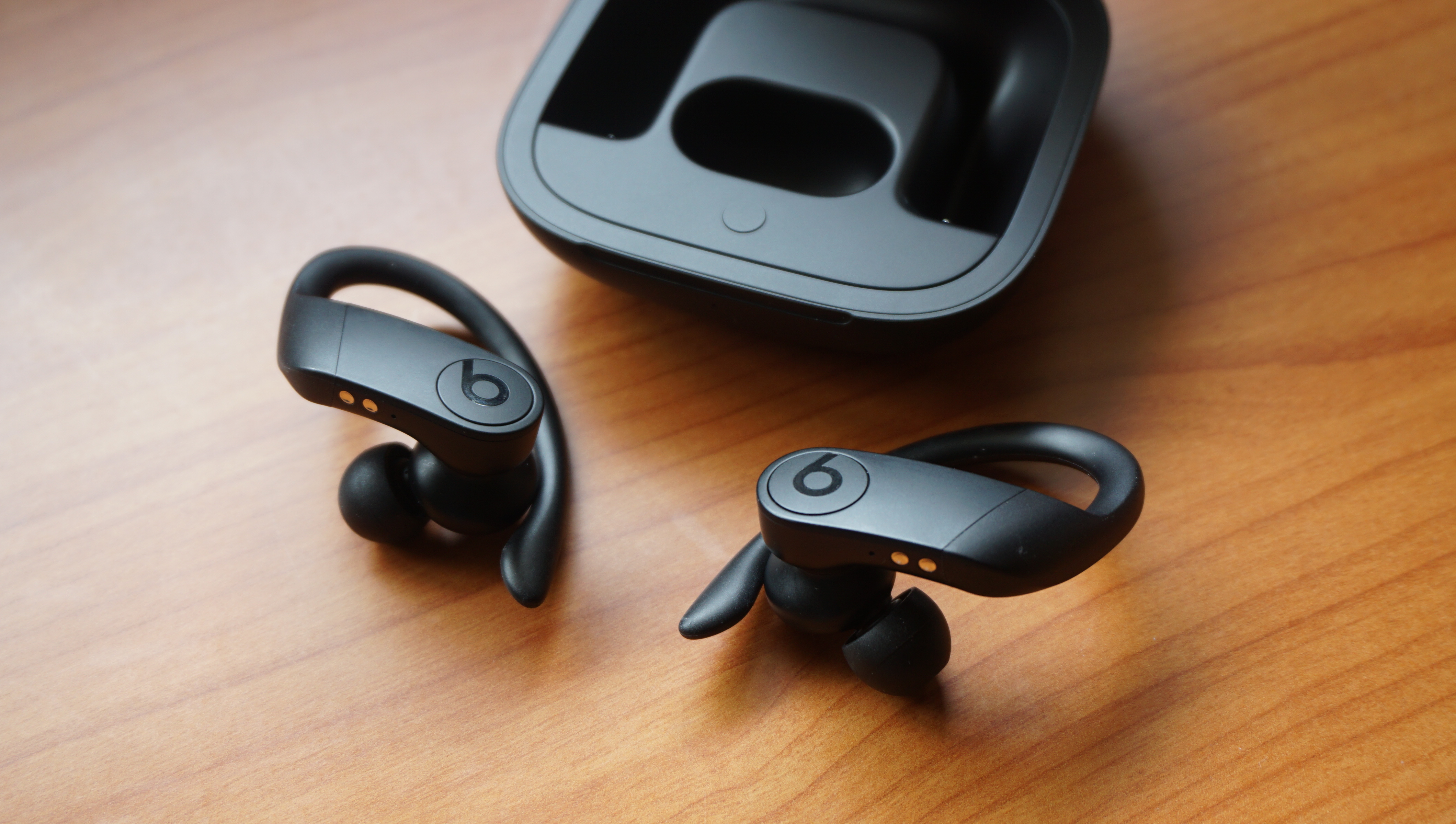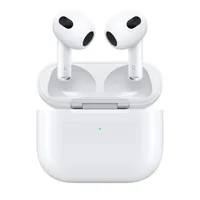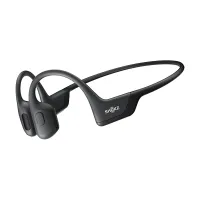TechRadar Verdict
The Beats Powerbeats Pro are a big step up for the Apple-owned headphone brand. They have their limitations (see: lack of noise-cancellation, limited noise isolation and IPX4 rating), but they are Apple’s most premium workout buds.
Pros
- +
Easy pairing with iOS
- +
Immaculate fit
- +
Enjoyable sound
Cons
- -
Case is fairly bulky
- -
Limited noise isolation
- -
Only IPX4 rated
Why you can trust TechRadar
The Beats Powerbeats Pro are a solid step for Apple and its series of workout-focused headphones.
Launched in 2018, while Apple could've churned out a half-decent, sweat-resistant pair of wireless earbuds and called it a day, the Powerbeats Pro are something special—they’re supremely comfortable, sound decent and seem to never, ever fall out.
This is why they're a top pick in our best workout headphones guide, best running headphones guide, best wireless earbuds guide and best true wireless earbuds guide.
Since they were released, a number of newer true wireless earbuds have launched, including the Apple AirPods Pro, the Apple Airpods 3, and the Beats Fit Pro.
But the Beats Powerbeats Pro remain Apple’s most premium play into the world of running headphones, and are the buds we'd recommend to most workout enthusiasts. Read on for our full Beats Powerbeats Pro review.
Beats Powerbeats Pro: price and release date
- Launched in 2018
- Expensive but not out of this world
- They cost $249 / £219 / AU$349
The Powerbeats Pro launched in 2018.
When they first came out, they were available in four colors: Black, Ivory, Moss, and Navy, all of which come with a matching charging case. A year later in 2019, Apple launched four new, more vibrant shades. However, it looks like the range has since been cut back to three core colors: Black, Ivory and Navy.
Sign up for breaking news, reviews, opinion, top tech deals, and more.
The Beats Powerbeats Pro cost $249 / £219 / AU$349. This means, compared to Apple's other products, the Powerbeats Pro are expensive, but not the most pricey of the bunch.
For comparison, the AirPods Pro are $249 / £249 / AU$399, which you can find out more in our AirPods Pro review. Whereas the 3rd generation of AirPods are $179 / £169 / AU$279, take a look at our Apple AirPods 3 review.
The newer Beats Fit Pro, in comparison, are $199 / £199 / AU$299.95. Read our Beats Fit Pro review for more information.
Looking at Apple's rivals, the Jabra Sport Elite are designed for fitness in a similar way and are available for $250 / £230 / around AU$330. Whereas the Shokz OpenRun Pro are $179.95 / £130 / AU$250. Although they have a completely different form factor with a band and bone conduction tech, they're rapidly becoming the top choice for runners and rival the Beats Powerbeats Pro in this respect.
So although the Beats Powerbeats Pro might be expensive, but not wildly so. As they're a fantastic pair of headphones for all kinds of scenarios and—at least for fitness—we do prefer them over Apple's AirPods.
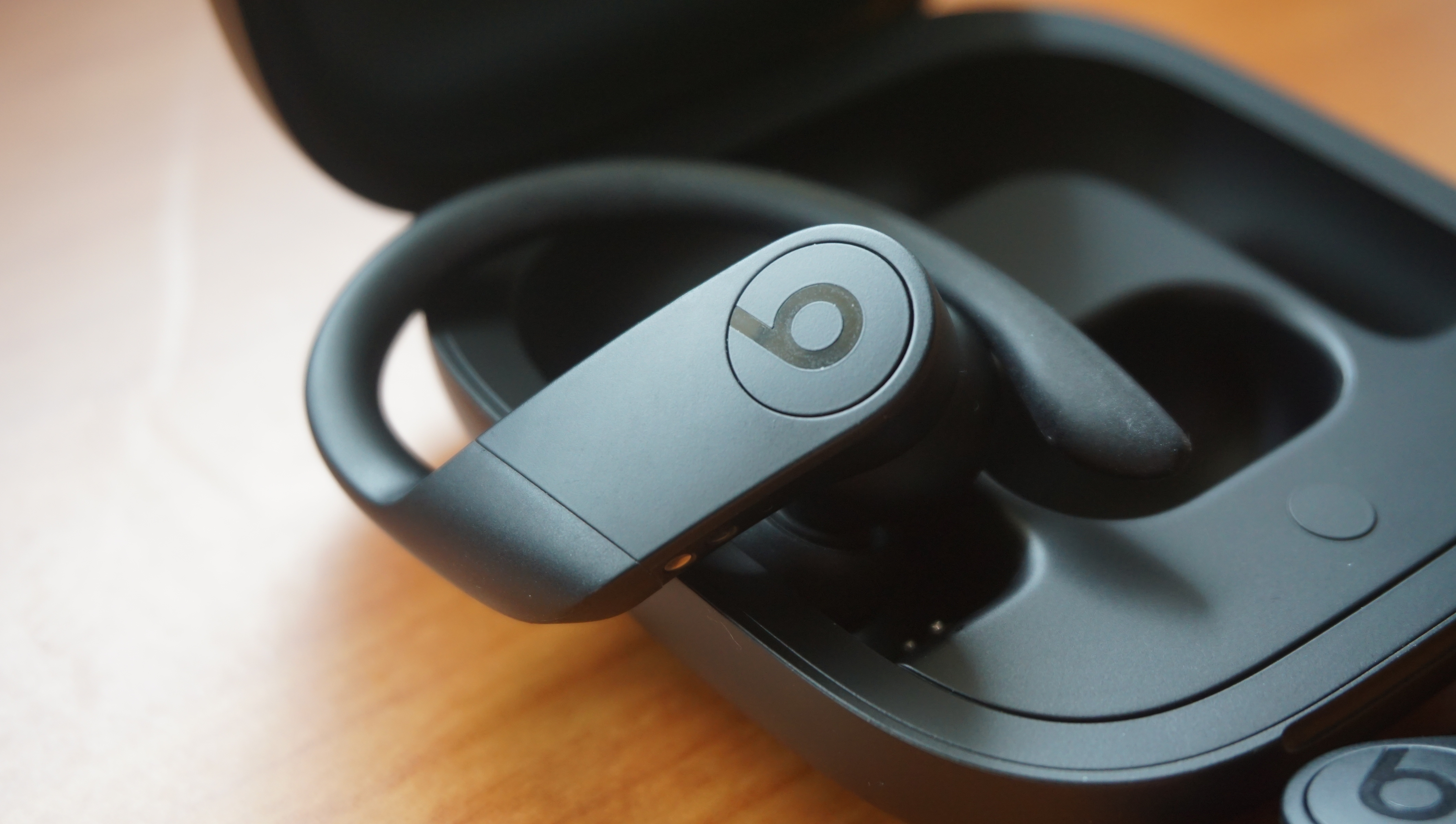
Beats Powerbeats Pro: design
- A sporty design
- Hands-free control
- Great fit for sports
In terms of design, there’s a lot to like about the Beats Powerbeats Pro. These buds have a sporty look to them, while still being practical enough to wear around outside the gym.
On each of the two earbuds, the Powerbeats Pro have a center playback control button where the Beats logo is, plus a volume rocker. That means you can control your music with whichever hand is free, which is a nice feature. (Of course, if you have Hey Siri enabled, you can simply say the wake word with a voice command for the same effect.)
Dimensions (earbuds): 2.3cm X 5.9cm X 3.8 cm
Weight (earbuds): 11g
Dimensions (charging case): 4.3cm X 7.7cm X 7.7cm
Weight (charging case): 80g
Connectivity: iOS and Android
Battery life: 9 hours (24 hours with case)
Noise-cancellation? No
Water-resistance? Yes, IPX4 splash-resistant
It also helps that the Pro buds are extremely comfortable, and not just in terms of how they fit in and around the ear, but also in terms of how they feel when you’re listening to music.
If you’ve used other true wireless headphones in the past, you might recall feeling a sort of in-ear pressure while listening to music. It’s something we’ve certainly felt while listening to other workout earbuds like the Jaybird X4, but that uncomfortable pressure simply doesn’t exist with the Powerbeats Pro.
That’s because of a micro-laser barometric venting hole in the front chamber that, in Apple’s own words, reduces pressure in the ear and improves the bass response… not that Beats headphones needs any help with bass levels.
Another factor that contributes to the excellent fit is how slim the nozzle of the earbuds are. It’s smaller than a lot of other true wireless earbuds on the market and with four different ear tip options, there are still plenty of ways to get that perfect seal.

One issue with the design of the Beats Powerbeats Pro is that they do jut out of the ears a bit, and don’t have quite the same low-profile look as the Apple AirPods.
This is also kind of an issue if you want to wear headphones to bed, as when you lay down with them in your ear, it pushes them uncomfortably far into the ear canal.
The other issue, and it’s something other reviewers harped on as well, is that the Powerbeats’ case is enormous. It’s the kind of thing that looks awkward in your gym shorts and can be a hassle to carry around in your pockets. It feels like the only place the headphone case belongs is in your gym bag or locker, and that’s kind of disappointing if you want to wear the Pro while you work at the office.
Apple’s rebuttal to that statement is that the Powerbeats can last up to nine hours in between charges and store about two charges in the case. When you combine those numbers, Apple claims the Powerbeats Pro have a 24-hour battery and should last a few days between charges—a claim to be fairly accurate during testing, getting two and a half charges from the case with about eight-or-so hours of use per charge.
Unfortunately, however, if you want wireless charging, you won’t find it here. If you want to stay within the Apple family, only the latest versions of the AirPods have that feature so, for now, you’ll still have to use a lightning cable to charge the case every few days.
Beats Powerbeats Pro: setup
- Work with Android, but better experience with iOS
- New H1 wireless chip
Like other AirPod products, the Powerbeats Pro are the most at home when paired with other Apple devices. On iOS, pairing up the Powerbeats Pro is as simple as opening the case near your iPhone or iPad. Two touches later and your devices are synced.
As with the AirPods, you can then open the case to see how much battery life is left on your iOS device, and that helps further their space-age feel. (It would’ve been nice to see their battery life in the top-right corner of the home screen like we’ve seen with other true wireless earbuds, but that’s not a dealbreaker.)
That said, the Powerbeats Pro aren’t Apple-exclusive and will work with Android and Windows 10 devices. All you need to do is hold the pairing button inside the charging case and select the Powerbeats Pro on the device you want to pair. There’s almost no difference in sound quality that we could hear between a paired iOS device (our iPhone 8) and a paired Android device (our Google Pixel 3a XL), as both connections use Bluetooth 5.0.
One of the key reasons you’d want to use an Apple device is to take advantage of the new H1 Wireless Chip, the same one that just went into the Apple AirPods. With it, you’ll notice faster pairing times and hands-free Siri. You can certainly survive without those features, obviously, but hands-free Siri is a spectacularly useful feature if you want to place calls or send texts without picking up your phone.

Beats Powerbeats Pro: performance
- They sound great
- No noise-cancellation
- Not waterproof, only IPX4 splash-resistant
Staying in your ear and connecting to your devices seamlessly is table stakes in this category. What really matters is how good they sound when you’re moving—an area that a lot of popular earbuds don’t really master.
The good news is that the Beats Powerbeats Pro sound good both during a workout and during your time away from the gym. Yes, there’s a slight flimsiness to the sound if you take a critical ear to it—but it’s not the kind of thing you notice during your workout.
Over the course of a few weeks we listened to a number of genres and found that, like you’d expect, the Beats brand still caters to EDM, R&B and rap, and can now play most crunchy rock and alternative with some authority.
What’s more surprising is that the Beats Powerbeats Pro have really turned down the bass this time around. They’re not quite at a flat EQ, but it’s like a gentle v-shape that boosts the highs and lows with a slight recess on the mids. It’s a smooth curve that music sounds reasonably energetic, but not too slanted that movies and shows are unwatchable. In fact, even movies like Thor Raganarok sounded absolutely fine with them.
The problem here, however, is that music—and audio as a whole—is relatively subjective. Our preferences for an EQ curve aren’t going to be your tastes, and Apple doesn’t provide you any tools to alter the sound. That can be frustrating if you don’t feel like you’re hearing enough mids when you’re watching a movie and worse, if you feel like your music is missing some sparkle in the upper register. As of now, there’s no way to add any of that back in.
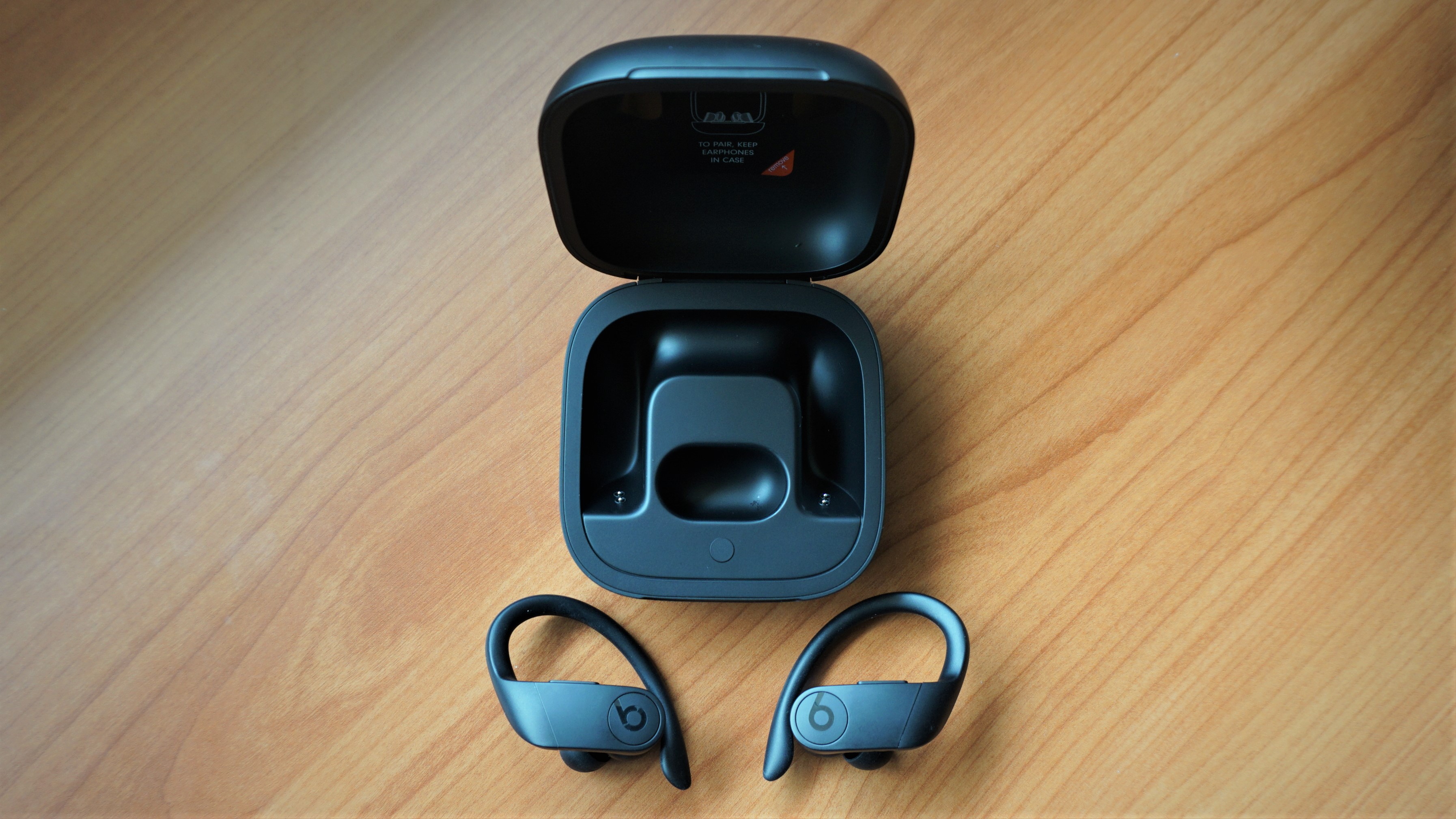
You’ll also be made frustratingly aware of all of these issues when you take the Beats Powerbeats Pro with you on any form of public transit—for all its other features, the Powerbeats Pro still don’t offer noise-cancellation.
Even worse, however, is that they don’t block sound out very well either (what we call passive noise-isolation). So, unless you blast your music at uncomfortable levels, expect to hear everything going on around you.
An even more practical issue people might have with the Powerbeats is that they’re only IPX4 splash-resistant. This means they can take a bit of sweat, maybe an accidental splash from a water bottle or someone jumping in the pool, but they’re not water-proof. That means you need to be careful if you bring these with you to the beach and you should keep them as far away as you can from a pool party - if they stay submerged for more than a few seconds, they probably won’t ever work the same.
Where we found the Beats Powerbeats Pro to perform their best is in a near-quiet environment, like your office, your home or your gym—because you can use hands-free Siri, they’re great for setting timers in between sets and placing calls to friends and clients.
Also, because they’re so comfortable in the ear and last around eight hours between charges, you can wear them around the house for hours without issue—making them a decent everyday headphone and the one we’d go for if we needed to make a call or listen to Spotify on our phone.
To keep the music going, in between sessions we’d pop the earbuds back into their case and they’d be ready to go and fully charged within an hour and a half.
Conclusion
Ultimately, while the Beats Powerbeats Pro impressed us, they’re simply not the best true wireless earbuds on the market.
These earbuds still aren’t noise-cancelling like the AirPods Pro, nor are they water-proof like the Jaybird Run XT, nor do they sound as good as the Sony WF-1000XM4 earbuds.
That said, however, they are—in our opinion—Apple’s best workout earbuds to date thanks to small additions like the earhooks, pressure-reducing micro-laser barometric venting hole, their longer battery life and superior sound quality.
To that end, buy these earbuds if you’re an Apple-loving gym-goer who can appreciate better-sounding music and features like hands-free Hey Siri, and don’t mind paying a bit more for those things.
Also consider...
If our Beats Powerbeats Pro review has you considering other true wireless earbuds, then here are three other options to check out, all of which would make a fantastic pair of workout headphones.
Apple AirPods Pro
The Apple AirPods Pro are more expensive than the Powerbeats Pro and we don't think they're better—or much better. However, there are many reasons you might want the AirPods instead, including noise cancellation, which you don't get with the Powerbeats, and if you simply love that trendy AirPods-look with the instantly recognisable stems.
Read our full Apple AirPods Pro review
Shokz OpenRun Pro
For something a bit different, take a look at bone conduction headphones. Although the Shokz OpenRun Pro might not seem like direct rivals, if you're looking for running headphones, these might suit you better. Their design means they stay put and you're aware of your surroundings at all times.
Read our full Shokz OpenRun Pro review
Sony WF-1000XM4
If you're looking for the best of the best true wireless earbuds, the XM4s from Sony are our top picks. They're comfortable and sound fantastic. They're more expensive than the Powerbeats Pro, but not by much and the key difference is there's noise cancellation on board.
Read our full Sony WF-1000XM4 review
- First reviewed in May 2019

Nick Pino is Managing Editor, TV and AV for TechRadar's sister site, Tom's Guide. Previously, he was the Senior Editor of Home Entertainment at TechRadar, covering TVs, headphones, speakers, video games, VR and streaming devices. He's also written for GamesRadar+, Official Xbox Magazine, PC Gamer and other outlets over the last decade, and he has a degree in computer science he's not using if anyone wants it.
